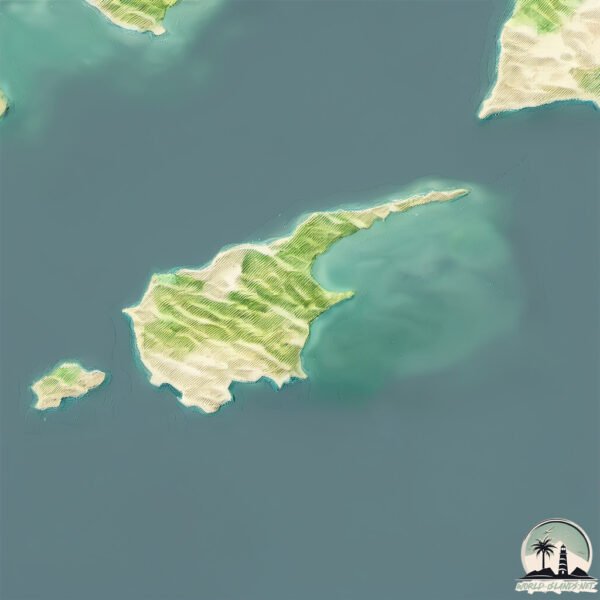St. Peter

Welcome to St. Peter, a Dry island in the Great Australian Bight, part of the majestic Indian Ocean. This guide offers a comprehensive overview of what makes St. Peter unique – from its geography and climate to its population, infrastructure, and beyond. Dive into the details:
- Geography and Size: Explore the island’s size and location.
- Climate and Weather: Weather patterns and temperature.
- Topography and Nature: Uncover the natural wonders of the island.
- Infrastructure and Travelling: Insights on reaching, staying, and making the most of your visit.
- News and Headlines: Latest News.
Geography and size of St. Peter
Size: 39 km²
Coastline: 52.6 km
Ocean: Indian Ocean
Sea: Great Australian Bight
Continent: Oceania
St. Peter is a Medium Island spanning 39 km² with a coastline of 53 km.
Archipel: –
Tectonic Plate: Australia – A major tectonic plate covering Australia, New Zealand, and parts of the Indian and Pacific Oceans, known for its relative stability and occasional seismic activity.
The geographic heart of the island is pinpointed at these coordinates:
Latitude: -32.27942537 / Longitude: 133.58593979
Climate and weather of St. Peter
Climate Zone: Dry
Climate Details: Cold Desert Climate
Temperature: Cold
Climate Characteristics: Similar in dryness to hot deserts but with cold winters. Days can be warm or hot, while nights are typically chilly with common frost occurrences.
Topography and nature of St. Peter
Timezone: UTC+09:30
Timezone places: Australia/Adelaide
Max. Elevation: 35 m
Mean Elevation: 17 m
Vegetation: Cultivated Land
Tree Coverage: 46%
The mean elevation is 17 m. The highest elevation on the island reaches approximately 35 meters above sea level. The island is characterized by Plains: Flat, low-lying lands characterized by a maximum elevation of up to 200 meters. On islands, plains are typically coastal lowlands or central flat areas.
Dominating Vegetation: Cultivated Land
Areas dedicated to agricultural activities, growing crops like grains, vegetables, and fruits. These lands are usually human-modified landscapes. St. Peter has a tree cover of 46 %.
Vegetation: 11 vegetation zones – Exceptionally Diverse Island
Islands with more than ten vegetation zones are among the most ecologically rich and varied in the world. These islands are akin to miniature continents, boasting an incredible array of ecosystems. The sheer range of habitats, from high peaks to deep valleys, rainforests to deserts, creates a mosaic of life that is unparalleled. They are crucial for conservation and ecological studies.
Infrastructure and Travelling to St. Peter
Does the island have a public airport? no.
There is no public and scheduled airport on St. Peter. The nearest airport is Ceduna Airport, located 12 km away.
Does the island have a major port? no.
There are no major ports on St. Peter. The closest major port is THEVENARD, approximately 7 km away.
The mean population of St. Peter is 0 per km². St. Peter is Uninhabited. The island belongs to Australia.
Continuing your journey, Eyre is the next notable island, situated merely km away.
Peter Island Resort and Spa, British Virgin Islands



Australia is classified as Developed region: nonG7: Developed economies outside of the Group of Seven, characterized by high income and advanced economic structures. The level of income is High income: OECD.
News – Latest Updates and Headlines from St. Peter
Stay informed with the most recent news and important headlines from St. Peter. Here’s a roundup of the latest developments.
Please note: The data used here has been primarily extracted from satellite readings. Deviations from exact values may occur, particularly regarding the height of elevations and population density. Land area and coastline measurements refer to average values at mean high tide.
